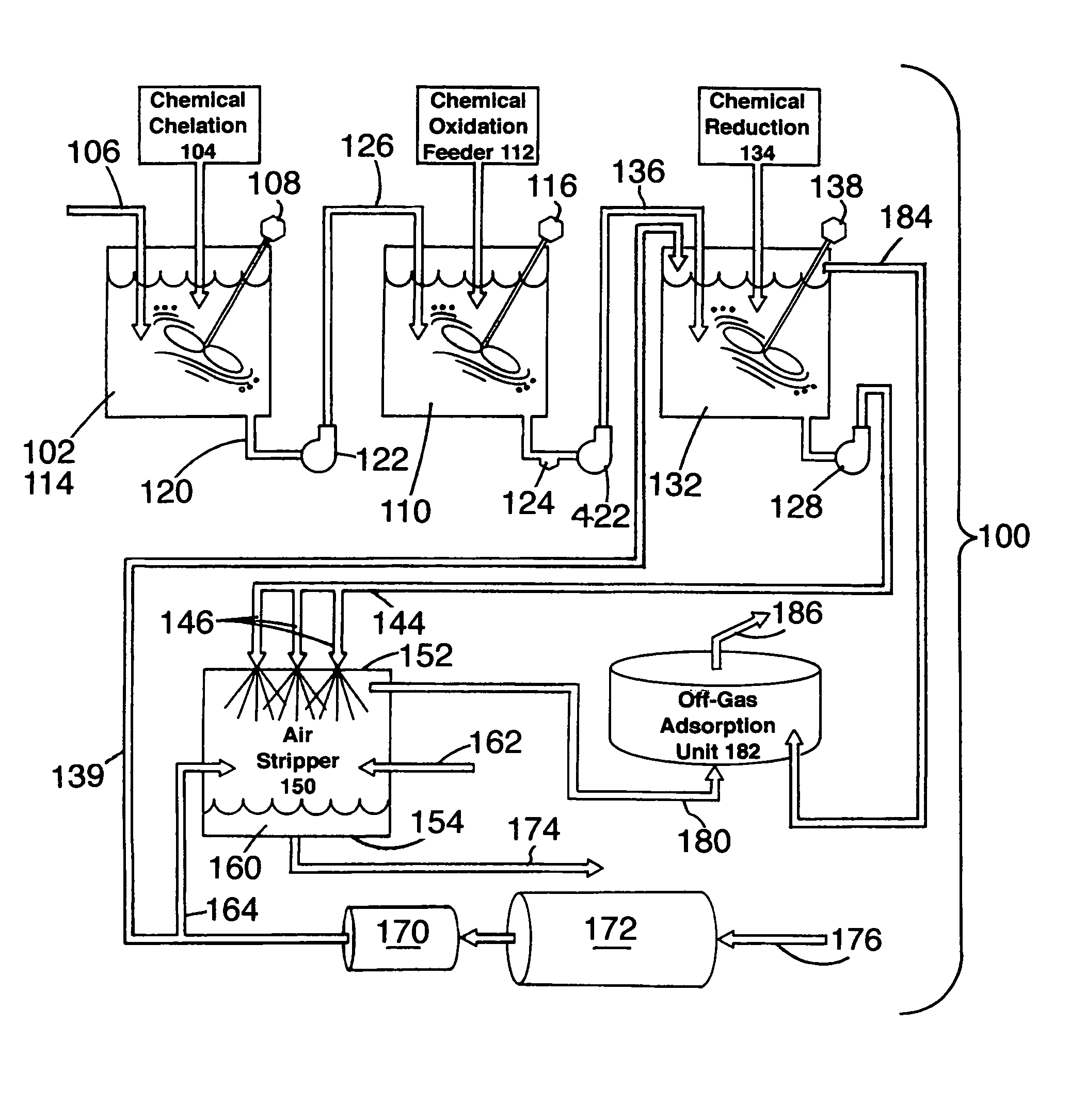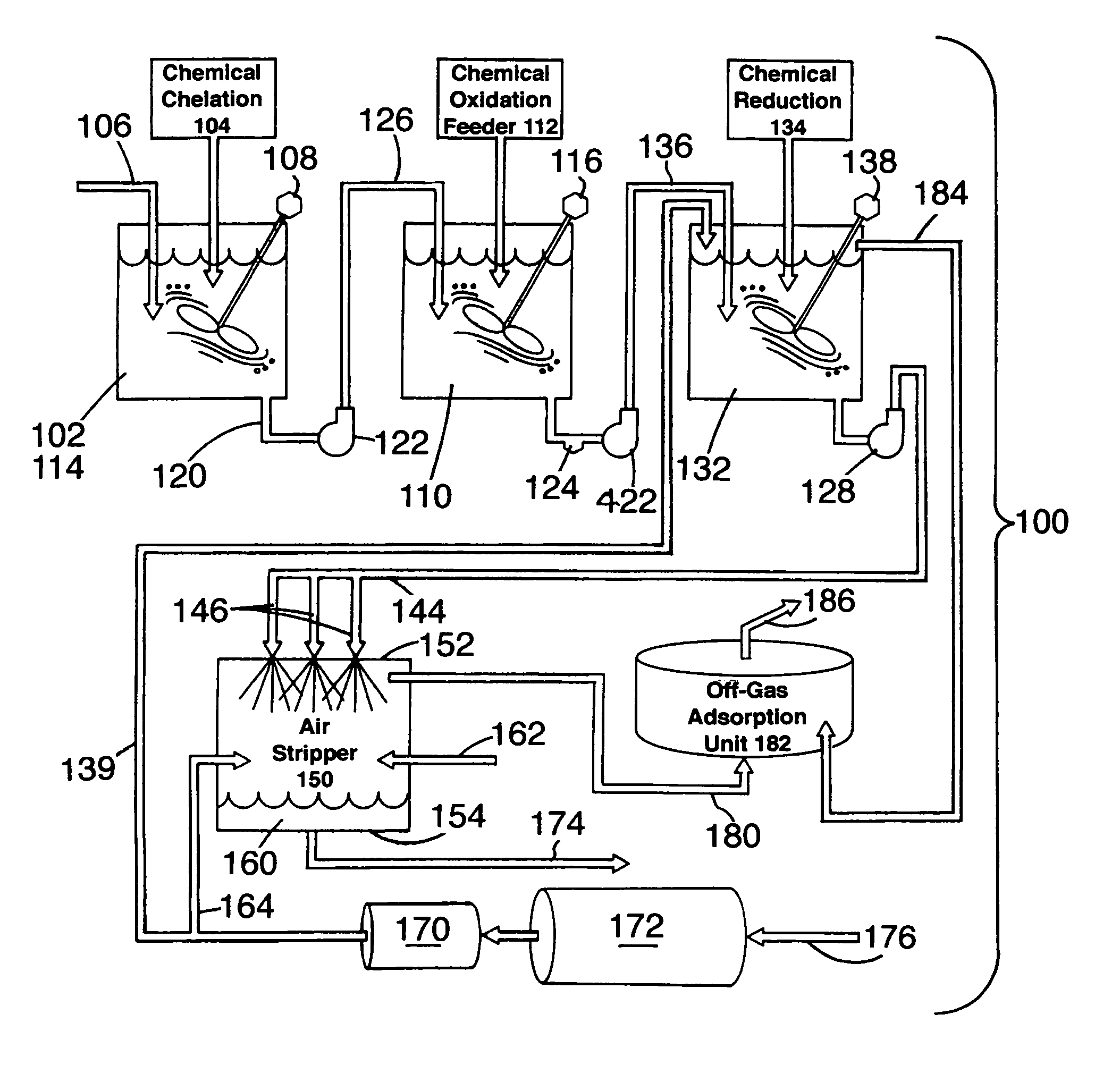Mercury remediation method and apparatus
a remediation method and equipment technology, applied in water/sewage multi-stage treatment, water/sewage treatment by degassing, separation processes, etc., can solve the problems of significant reduction of the overall feed rate of both chelant and/or oxidant, and achieve the reduction of individual and combined chemical feed rate, reduce the amount of chemicals, and reduce the overall feed rate of both chelant and oxidant.
- Summary
- Abstract
- Description
- Claims
- Application Information
AI Technical Summary
Benefits of technology
Problems solved by technology
Method used
Image
Examples
Embodiment Construction
[0015]Since the particular mercury-particle compound to be treated will likely depend on the origin of the wastewater (e.g., a coal powered electric utility air scrubber, an oil refinery wastewater, or a municipal wastewater stream), the optimal chelant and oxidant feed rate will also likely vary with the wastewater origin. Jar tests are performed manually to determine optimal feed rates of chelant and oxidant and these feed rates are controlled with the wastewater treatment automation system, accordingly. The chelant would be base-fed, that is, fed at the rate designated by the volume of wastewater. For example, 1 gallon of reagent would be mixed with 100 gallons wastewater. A method of reagent chemical feed control that is not feed-based, would be by sensor controller. For example, a pH or an Oxidation, Reduction, Potential (ORP) controller would measure the effect of the reagent and control the output of the reagent feed pump in order for the sensor to read a particular value. Ch...
PUM
| Property | Measurement | Unit |
|---|---|---|
| concentration | aaaaa | aaaaa |
| pore sizes | aaaaa | aaaaa |
| pore sizes | aaaaa | aaaaa |
Abstract
Description
Claims
Application Information
 Login to View More
Login to View More - R&D
- Intellectual Property
- Life Sciences
- Materials
- Tech Scout
- Unparalleled Data Quality
- Higher Quality Content
- 60% Fewer Hallucinations
Browse by: Latest US Patents, China's latest patents, Technical Efficacy Thesaurus, Application Domain, Technology Topic, Popular Technical Reports.
© 2025 PatSnap. All rights reserved.Legal|Privacy policy|Modern Slavery Act Transparency Statement|Sitemap|About US| Contact US: help@patsnap.com


